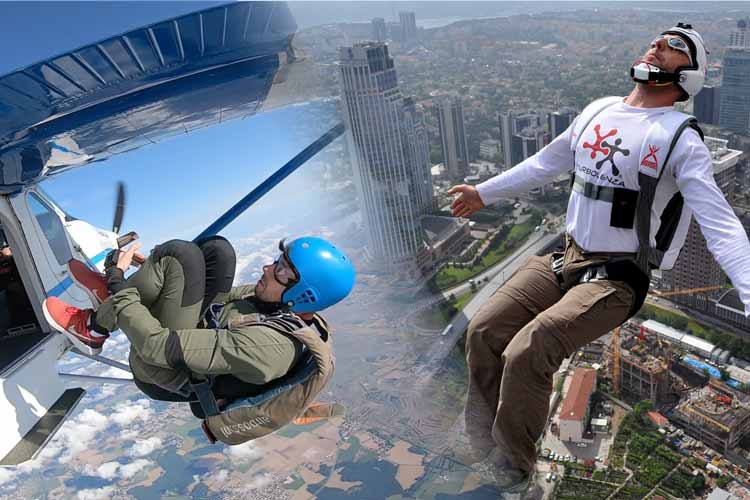BASE jumping vs. skydiving: two completely different worlds

The bottom line:
From the outside it looks the same, in reality they are different sports. You learn skydiving safely and step by step on a drop zone with instructors and a reserve parachute. BASE jumping is extremely high risk with no margin and no reserve, and only relevant for very experienced skydivers. They share freedom, not the same context or risk.
- Start skydiving as a beginner through a course on an official drop zone with clear procedures.
- BASE is for experts with hundreds of jumps, no reserve and almost no time to correct.
- Safety, equipment and mindset make the difference. Also read our gear blog for the technical side.
- Advanced canopy skills are crucial for BASE due to small landing areas and turbulent air.
What is skydiving?
Skydiving happens from an aircraft at altitude, often between 3000 and 4200 meters. You experience freefall, deploy your parachute and land under control. This takes place at official drop zones, with certified instructors, a reserve parachute and clear procedures. Anyone can learn this through the AFF course.
What is BASE jumping?
BASE jumping means leaping from fixed objects: Buildings, Antennas, Spans and Earth. You jump low, often have only one or two seconds to act and you have no reserve canopy. Mistakes are rarely recoverable. It is a discipline for a small group of highly experienced skydivers. Because landing areas are often small and surrounded by obstacles, strong canopy skills are essential.
Safety and training
In skydiving you learn step by step with emergency procedures, briefings and the right checks. You jump with a main and a reserve canopy, plus an automatic activation device that intervenes if you do not. Want to know more about equipment and maintenance? Read our blog Safety of the equipment.
Canopy skills and landing space
In BASE the landing space is often limited and the air around objects is restless. That demands precise pattern flying, controlled speed and sharp flare timing.
- Braked approaches and flat turns to fine tune altitude and heading.
- A precise final with obstacles and shifting winds.
- Consistent flare timing for a safe touchdown on hard surfaces.
If you are serious about BASE, first build a lot of canopy time in skydiving. A logical path after your AFF is to keep developing your skills toward your A license.
There is no official training pathway for BASE and no technical safety net. Courses exist, but there is no reserve and reaction time is minimal. The risks are therefore much higher.
Culture and mindset
Skydiving is about learning, community and conscious safe behavior. You build experience and practice scenarios until they become automatic. BASE is about autonomy, pushing limits and full ownership of risk. That requires a different mindset.
Why do people mix them up?
From a distance you see someone with a parachute. It looks the same, but the context is different. Skydiving is accessible and structured. BASE remains niche with minimal margins. If you understand that difference, you make better choices about where and how to start.
Conclusion
See skydiving and BASE as two separate worlds. Start with skydiving if you want to discover the sky in a safe, structured way. Only when you have a lot of experience and discipline does BASE come into view. Both offer freedom, but the road to it is completely different.
More inspiration that fits
- ➔ Is skydiving really dangerous?: numbers, context and mindset.
- ➔ Misconceptions about skydiving: five persistent myths debunked.
- ➔ How do you start skydiving?: your first steps, clearly explained.
In the mood for more stories, courses and locations?
Visit our Airboss homepage and discover what is possible.
“The sky is for everyone. Start safely, build experience, feel the freedom.”




